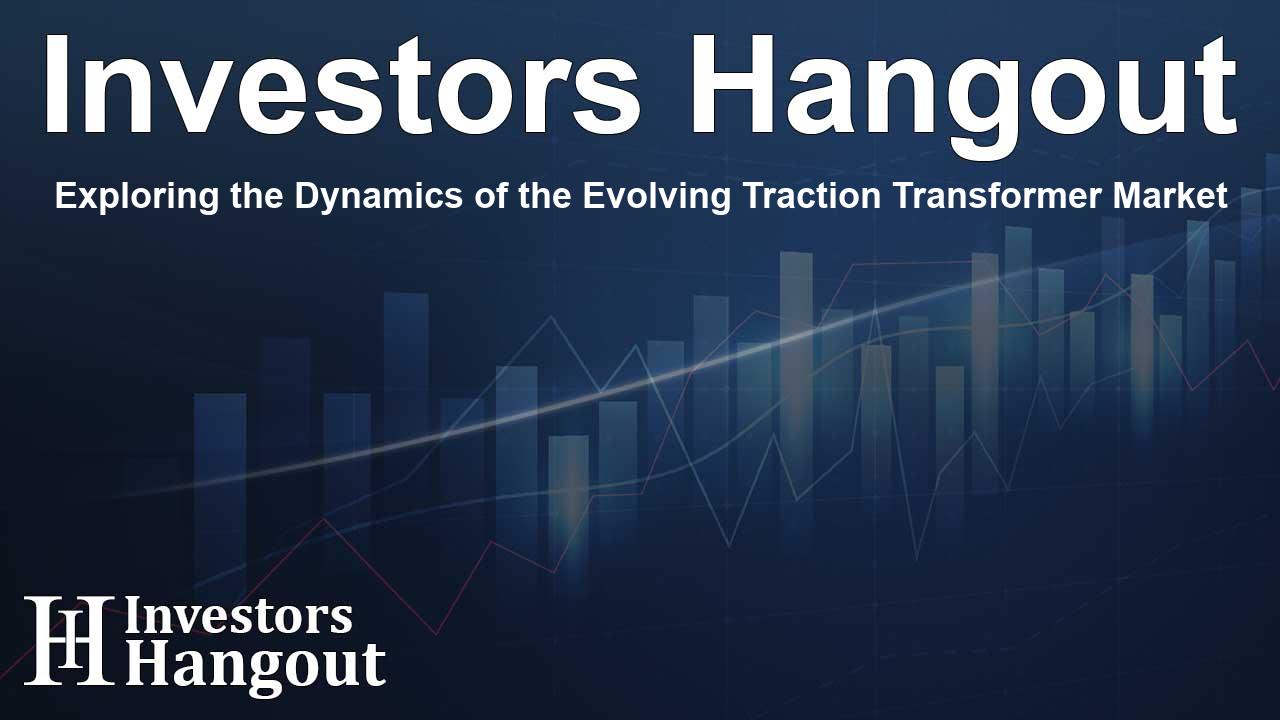Exploring the Dynamics of the Evolving Traction Transformer Market

Introduction to the Traction Transformer Market
The traction transformer market is experiencing significant growth as global efforts toward rail electrification gain momentum. Currently valued at approximately US$ 1.58 billion, forecasts anticipate that this market will surge to around US$ 2.88 billion by 2033, reflecting a compound annual growth rate (CAGR) of 6.9% from 2025 to 2033. This evolution is largely driven by innovative technologies and increasing demands for efficient and reliable power conversion in transportation systems.
Key Features and Advancements
Modern traction transformers are designed to operate across a wide range of voltage levels including 1.5 kV DC, 3 kV DC, 12 kV, 15 kV, and up to 25 kV. This versatility is crucial to meeting various regional electrification standards. Additionally, many of these units are capable of handling different frequencies from 16.67 Hz to 60 Hz, providing the flexibility needed to integrate with both legacy and contemporary rail networks.
Innovations in Design
Recent advancements in the design and manufacturing of traction transformers are redefining their efficiency and reliability. Enhanced models achieve exceptional power densities of up to 17.7 kW per liter. They are also outfitted with energy-efficient capabilities that lead to operational cost reductions. Superconducting transformers, for example, exhibit a remarkably advantageous weight-to-cooling power ratio, thus ensuring better energy management.
Growing Demand and Market Adoption
The traction transformer market is not just responding to technological advancements but also to the evolving needs of urban and intercity rail systems. The rising demand for lightweight transformers directly correlates with the expansion of commuter networks globally.
Market Challenges and Competitive Landscape
Despite the promising growth, the traction transformer market faces certain challenges, including complexities linked to technology integration with older systems. Additionally, aspects related to reliability under varying climatic conditions have emerged as vital considerations for operators.
Performance Metrics
Traction transformers typically weigh between 3 to 15 tons and have an expected lifespan of over 30 years with proper maintenance. These physical attributes aid in their installation flexibility, supporting strategic deployment across diverse transportation networks.
Investment Trends and Cost Efficiency
Cost efficiency is a key driver for investment in this market. The manufacturing costs are estimated at around $8 per kVA, with delivered costs typically around $10 per kVA. Enhanced designs are making these transformers approximately 30% more energy efficient compared to legacy systems, thereby reducing total cost of ownership (TCO). Furthermore, long-term maintenance is reported to be up to 40% cheaper, garnering increased interest from public and private investors.
Future Trends in Sustainability and Innovation
The direction of the traction transformer market is being shaped by sustainability initiatives and innovations in insulating materials. Modern insulating oils used in transformer systems have robust properties, such as maintaining a high dielectric strength. These advancements not only ensure operational safety but also support a growing emphasis on environmentally friendly technologies within the sector.
Key Industry Players
Companies like ABB, Alstom SA, and Siemens AG are leading the traction transformer sector with continual innovations and market expansion efforts. Enhanced technical capabilities and strategic partnerships are crucial for these players in achieving sustained growth and competitive advantages.
Frequently Asked Questions
What is driving growth in the traction transformer market?
The growth is primarily driven by electrification initiatives in rail networks along with demands for energy-efficient and reliable power systems.
How does voltage range impact the traction transformer market?
A broad voltage range is essential for compatibility with different regional electrification standards, making transformers versatile for various applications.
What innovations are shaping the future of traction transformers?
Improvements include energy-efficient designs, superconducting technology, and advancements in insulating materials that enhance performance and sustainability.
Who are the major players in the traction transformer market?
Key players include ABB, Alstom SA, Siemens AG, Mitsubishi Electric Corporation, and others, all contributing to technological advancements and market growth.
What challenges does the traction transformer market face?
Challenges include integration with older systems, ensuring reliability under diverse climate conditions, and managing complexities in the lifespan of the products.
About The Author
Contact Hannah Lewis privately here. Or send an email with ATTN: Hannah Lewis as the subject to contact@investorshangout.com.
About Investors Hangout
Investors Hangout is a leading online stock forum for financial discussion and learning, offering a wide range of free tools and resources. It draws in traders of all levels, who exchange market knowledge, investigate trading tactics, and keep an eye on industry developments in real time. Featuring financial articles, stock message boards, quotes, charts, company profiles, and live news updates. Through cooperative learning and a wealth of informational resources, it helps users from novices creating their first portfolios to experts honing their techniques. Join Investors Hangout today: https://investorshangout.com/
The content of this article is based on factual, publicly available information and does not represent legal, financial, or investment advice. Investors Hangout does not offer financial advice, and the author is not a licensed financial advisor. Consult a qualified advisor before making any financial or investment decisions based on this article. This article should not be considered advice to purchase, sell, or hold any securities or other investments. If any of the material provided here is inaccurate, please contact us for corrections.
